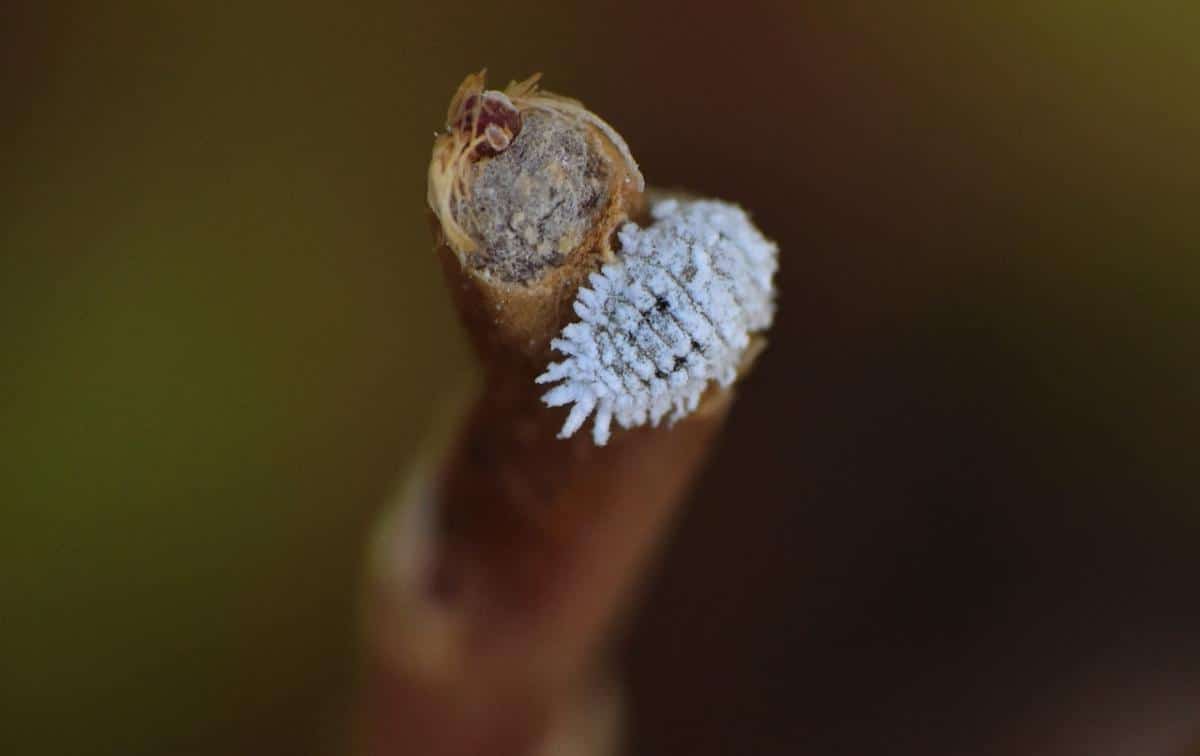
Image - Wikimedia / Petar43
El Pilosocereus azureus is a cactus with columnar and spiny stems with great ornamental value. Although it grows at a rate that we could describe as slow, it is not nearly as slow as others, such as the Ferocactus, or let alone the The giant carnage (saguaros).
In fact, it is an interesting species to grow in gardens, because it can be taken for granted that in a few years you will get a good size specimen.
Origin and characteristics of Pilosocereus azureus

Image - Wikimedia / Facheiro
El Pilosocereus azureus It is an endemic cactus to Brazil, although its beauty has led it to gardens in all warm regions of the world. It reaches a height of 2 and 10 meters in height, and over time it becomes a highly branched plant, with branches that sprout a short distance from the ground.
The stems are bluish in color, with a diameter of between 5 and 11 centimeters. They have between 5 and 19 ribs, from whose areoles arise between 1 to 12 central spines which are up to 30 millimeters long, as well as radial ones that measure between 5 and 15 millimeters.
It blooms once it reaches adulthood, producing flowers between 2 and 5 centimeters in diameter. The fruit is sphere-shaped and has a magenta pulp, in which we will see numerous dark colored seeds.
Its currently accepted scientific name is Pilocereus pachycladus, but it is still better known by its synonym, P. azureus. It is also called blue cactus.
Caring for the Pilosocereus azureus
To know how to care for this cactus, it is important to take into account how it lives in its natural habitat, that is, in its origin, since in this way we can get an idea of how to have it. Well, with that said, it must be said that It is a cactus typical of the bushes, where it coexists with other plants, most of them small.
It is found from 50 to 1550 meters above sea level, something very interesting since it makes it a plant capable of living both in tropical climates with a marked dry season, as in the temperate-warm ones where -very- soft and punctual frosts are registered.
The typical soil on which it develops is usually sandy or rockyTherefore, when it rains, the water is absorbed quickly, thus preventing its roots from remaining wet for a long time. Therefore, we should not plant it in heavy or compact soils, since we would run the risk of losing it.
Starting from this, let's see how to take care:
Location
At first, it is best to put it outside, in a bright area. It is a cactus that grows in full sun, since it needs to be exposed to it in order to have a normal development.
But things will change if our plant has not acclimatized, or if there are intense frosts in the area where we live. In the first case, we will have to put it in semi-shade, and in the last, we must protect it either by putting it at home or in a greenhouse.
If you choose to have it at home, we will take it to a room where there is a lot of light, and we will place it away from drafts.
Soil or substrate
- Flower pot: in pot you will need light substrates, such as the pumice, the small volcanic clay of 1-3mm, or substrate for cacti (on sale here).
- Garden: if the garden soil is heavy and compact, we will make a hole of 1 x 1 meter, and we will fill it with some substrate mentioned before.
Irrigation
In general, scarce. The soil must be allowed to dry between waterings so that the roots do not rot. In addition, it is important that the cactus does not get wet, that is, that it does not water from above, and less if at that time it is directly lit (actually, it is always better to water at dusk, when the sun is low , since not only does it prevent the plants from burning, but it also ensures that they have more time to absorb it).
Another important topic to talk about is the plate under the pot. It is not good that it has it, because the water that is not absorbed by the substrate, will end up there, and that would rot the cactus. It should only be had if we always remember to drain it after each watering.
Subscriber
If you want to get something to grow faster, and healthier, It is very interesting to pay it throughout the spring, summer, and even autumn if the weather is warm.. To do this, we will use specific fertilizers for cacti, choosing those that are liquid (such as this) if it is in a pot so that the drainage remains ideal.
Multiplication
El Pachycereus azureus multiplies by seeds and cuttings in spring; but in any case it is important to use light and porous substrates, such as vermiculite (for sale here) which is ideal for seedbeds, or the aforementioned pumice (for sale here) so that the cuttings root better.
They will be placed in a bright area, and will be kept watered.
Pests and diseases of the blue cactus

It is a cactus quite resistant to pests and diseases. In fact, I have one and what it has at times has been mealybugs, but nothing else. These are removed with diatomaceous earth (for sale here), since it dehydrates them.
You also have to be careful with slugs and snailsas they tend to devour cacti.
Rusticity
By experience, I can say that it resists up to -1,5 or -2ºC but if they are specific frosts and of very short duration. According to some sources consulted, it is said that it holds up to -3ºC.
Where to buy Pilosocereus azureus?
Would you like to have your own plant? Then click here:
